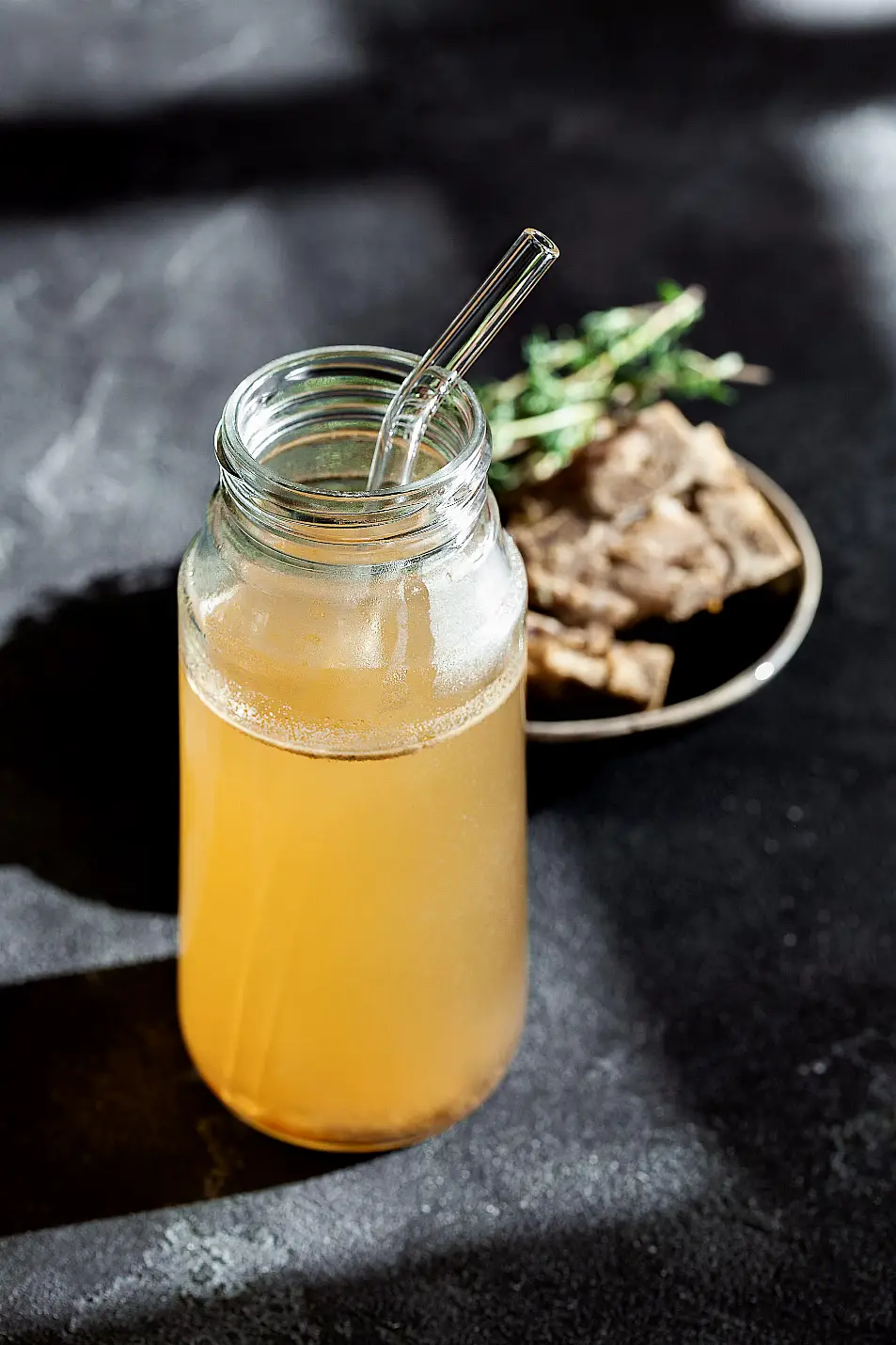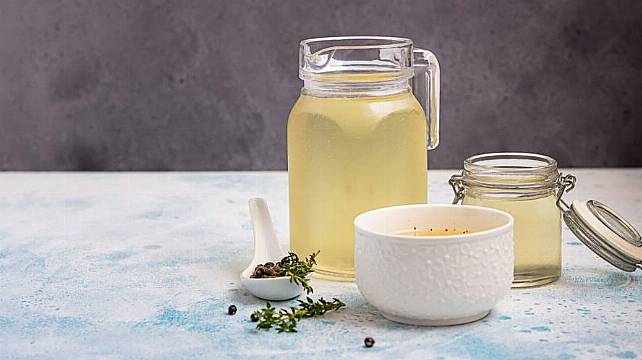TikTok is awash with health and wellbeing hacks, products and trends, and one of the biggest is our current obsession with bone broth.
A clear drink made from animal bones – stock, essentially – bone broth is cropping up in health food shops, supermarkets and atop market stalls in cartons, bottles and cans as companies try to get in on the latest wellness trend.
The hashtag has more than 155 million views on the video-sharing platform and keeps growing – as people are tracking their progress drinking it.
And with the likes of Gwyneth Paltrow and Kylie Jenner shouting about its supposed benefits, it’s unsurprising that young audiences are catching on.

So how exactly is it made?
“Bone broth is a liquid made by simmering animal bones and connective tissue, typically from beef, chicken, or fish, with vegetables, herbs, and spices for an extended period of time,” says Sarah Coe, a nutrition scientist. “It can be used as a base for soups, sauces, stews and risottos, but is also sometimes consumed as a drink.”
TikTok users are claiming it does a whole host of things, from giving you glowing skin and promoting gut health, to stopping bloating and even weight loss.
Saw someone refer to bone broth as “meat water” and I haven’t been able to recover
— Ifrah F. Ahmed (@Ifrahmed) February 7, 2023
So what do experts say?
“Bone broth has been hailed as a cure-all and may have become more popular following the increased interest in more ancestral and traditional diets,” says Coe. “But despite the popularity of bone broth, there is very little scientific research looking at its potential health benefits.”
However, she adds: “Bone broth can contain some protein, vitamins, minerals and amino acids, which are released from bones and tissues when they are boiled.”
While Sarah Watkins, a dietitian and chief science officer at Field Doctor (fielddoctor.co.uk), says there may be some truth in claims that it’s good for skin.
“It’s suggested that it’s anti-ageing – bone broth contains collagen which is a structural protein found in the bone, skin, and cartilage. Clinical studies have demonstrated that supplementing with collagen can improve elasticity, hydration, and the appearance of wrinkles in human skin.
“The collagen in the bone broth could also aid in protecting bones and joints from damage brought on by ageing.”
She adds: “Some research suggests that the amino acid glycine within bone broth might improve sleep. Glycine is believed to aid relaxation, enabling people to experience deeper, more restorative sleep but more research is needed before I would advise you routinely eat bone broth.”

But the research on it is mixed and Coe believes “consuming collagen in foods does not translate to increasing collagen in the body”.
Could it actually do harm?
“There is a risk that bone broths may also be low in nutritional value so if you want to try bone broth you might want to add more vegetables and grains to the broth for a more balanced meal,” says Watkins. “Despite what some people might think, there’s also not any sufficient evidence on the health benefits of bone broth on digestive health.
“Please also watch out for the high salt content as this may be an issue as well as other additives which are not great for your gut microbiome.”
Even more alarmingly, Coe says: “Some research has suggested that drinking large quantities of bone broth may cause concern because of the high concentrations of lead found in these broths. This is because animal bones can store heavy metals like lead, which can then be released during cooking.”
Small quantities shouldn’t do any harm though.
Should we drink it?

In short, if you want. But remember it isn’t a miracle gut health, anti-ageing, weight loss potion.
“While it is thought that bone broth contains some incredibly useful nutrients that can directly benefit your health – which explains why it’s so popular – it’s also important to note that research into the benefits of bone broth is very limited,” says Watkins.
“Instead of spending money on eating bone broth daily, I would advise a wholesome homemade soup that is full of diverse plant types, whole grains and legumes – which are backed by a good body of evidence and support both good health and a diverse gut microbiome.”







